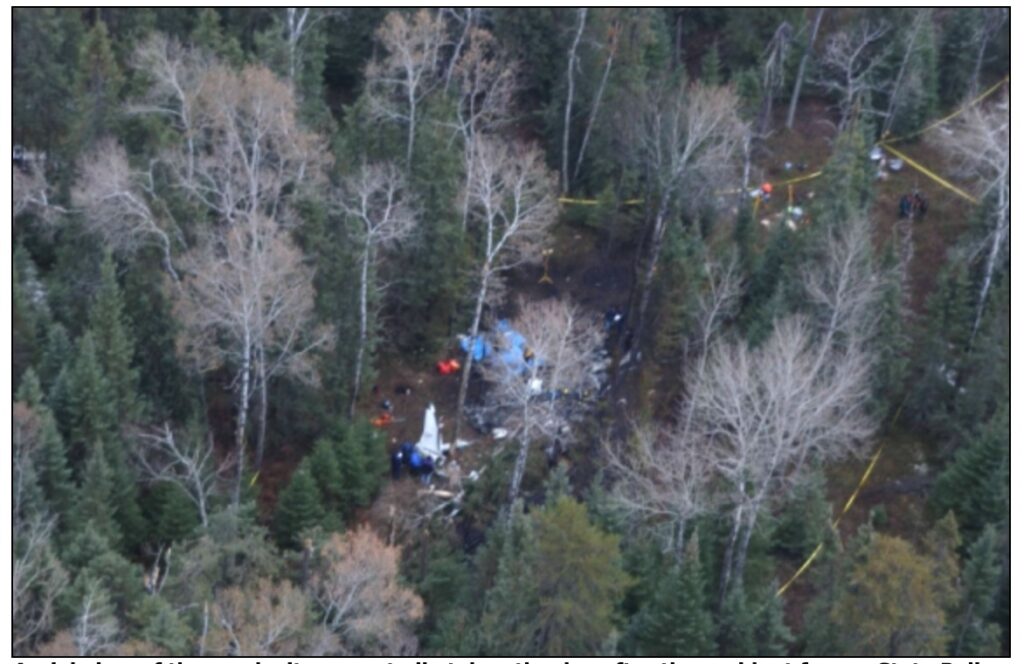
The morning of Oct. 25, 2002, started normal enough. I was in my office at the small, daily newspaper in International Falls, Minnesota, where I was the editor, putting the finishing touches on that day’s paper. I was into the back half of my day, answering emails, returning phone calls and planning for the next day’s edition.
That’s when my phone rang; it was an editor friend from the Star Tribune. He asked if I’d been watching the news, and I said of course. We’d all been glued to the TV that morning as word broke that former U.S. Sen.
Paul Wellstone’s plane had gone missing and presumed crashed. My friend said they had good information the plane went down outside of Eveleth, Minnesota, and he wondered if I could get there. They were scrambling a team of journalists to go cover the crash, but given the weather and the distance from the Cities, it was going to be hours before they could arrive.
He said if I could get there to cover the crash until their team arrived, they’d pay me as a correspondent, and I could keep any of my own original reporting for my paper the next day too. I grabbed the essentials, jumped in my family minivan and drove off in an ice storm to cover the Wellstone crash.
Twenty years later, the memory of the tragic Wellstone crash has faded among Minnesotans. So it’s difficult to imagine the magnitude of that story on that cold and drizzly October day. But, at the time, there was no bigger story in the country.
And because travel was difficult thanks to the early ice storm, and Eveleth isn’t near a large media center, I ended up being one of only two reporters — the other being a local radio guy — on scene for the first couple of hours of investigation into the crash.
Incredibly, in the early afternoon, when I drove up to the Eveleth airport office, there still was little official presence. In fact, it would be hours until the droves of federal, state and local authorities would commandeer the local airport, making it their base camp for investigating the crash that took place just a couple miles from the airport.
But when I arrived, the only people milling about the airport office were myself, the radio reporter, the airport manager and a few local aviation gadflys. We had the run of the place. The manager was willing to share the news he was hearing over the radio waves, and the local aviation enthusiasts were eager to share their knowledge of the weather conditions, the details of the plane carrying Wellstone and the nuances of landing at that airport. Us two reporters were positioned to hear all of the latest scuttlebutt, and unbelievably, we almost made it into the air.
Despite the less-than ideal flying conditions, we’d convinced the local airport manager to take us up in his plane so that we could get photos and a visual description of the crash scene, as local authorities on the ground weren’t letting anyone near the site. The manager agreed, and was finalizing preparations when he received the call: The Federal Aviation Administration had grounded all unofficial flight traffic in the area.
We missed getting in the air by mere minutes.
This meant we’d have to get the story another way: Hounding the growing number of authorities who were arriving by the minute and turning the entire airport and nearby crash site into one large investigation scene. But soon, the wide freedom to report the news that we had enjoyed in the early going vanished, and the growing press numbers were cordoned into the airport hangar where we were kept and from where eventually various officials would make their press statements.
Today, we take for granted the ability for news stations to produce instantaneous news feeds from any remote location on earth. But 20 years ago, news reporting was different, with online news sites still in their infancy, and reporters possessing what now would be antiquated mobile technology at best. So, when I arrived in Eveleth, after a challenging three-hour drive, I was armed only with a notebook, a 35 millimeter film camera with a zoom lens and a Nokia flip phone that had intermittent service thanks to the ice storm.
But those were the tools I used for several hours to spread the news about the Wellstone crash to the world.
I conducted my interviews, took notes, and then called in my updates from my cell phone — when it worked! — to a Star Tribune editor who transcribed them and wrote them into their ongoing online story.
And it was the Star Tribune’s story that was picked up by the AP, a worldwide news sharing service. It was only later that I would learn that it was my initial reporting of the crash that was being heard and published around the world. … Well, at least for the first few hours after the crash.
On this 20th anniversary of the crash, the surreal memories from that day are still crystal clear in my mind.
And I still have my newspaper clippings I wrote for my own paper, the Star Tribune story in which I was mentioned as a contributing writer … and $125 correspondent’s check that I never did cash.

Devlyn Brooks is the publisher of the Detroit Lakes Tribune, Perham Focus and Wadena Pioneer Journal, and their associated websites. He can be reached at dbrooks@dlnewspapers.com or at 218-844-1451.




Avoid the following video if you still believe in the holocaust myth….you’ll just get your feelings hurt. IF you understand the holocaust myth is a creation of the Zionists who run the US and our lives in one manner or another, watch it and bathe in the truth:
Auschwitz Tour – in fact a secure place for ’Jews’ during War.
https://153news.net/watch_video.php?v=KM6SMGG59DKY